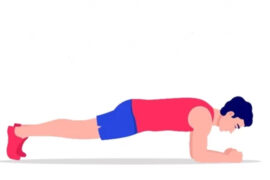How childhood play and imitation can inadvertently lay the groundwork for important concepts like plyometric training. Your description highlights the power of imaginative play and how it can unknowingly introduce us to fundamental movement patterns and training principles.
Plyometrics, as you’ve come to learn, involve explosive movements that utilize the stretch-shortening cycle to enhance muscle power and quickness. While your childhood imitations of The Six Million Dollar Man might have seemed like playful fun at the time, they were, in fact, introducing you to some of the core elements of plyometric exercises, such as jumping, bounding, and rapid muscle contractions.
Jumping to reach oranges from tree branches, leaping over obstacles, and even imitating the iconic slow-motion sound effect all contributed to developing your agility, explosive power, and body control – key components of plyometric training. It’s a wonderful example of how movement and play can contribute to our physical development in ways we might not immediately recognize.
As you’ve described, this form of imaginative play laid the foundation for skills that top athletes use to excel in their respective sports. It’s a testament to the power of movement and the creativity of childhood play. So, while you might not have realized it at the time, your childhood adventures were actually providing you with a unique and dynamic form of training that has since become a recognized and valued aspect of athletic performance.
Here’s a recap of the information you provided and a bit more detail on the concept of plyometrics:
What are Plyometrics?
Plyometric exercises, often referred to as “plyos,” are a form of training that focuses on rapid and forceful muscle contractions. These movements aim to improve the efficiency of the stretch-shortening cycle, which involves a quick muscle stretch followed by an immediate contraction. Plyometrics primarily target fast-twitch muscle fibers, which are responsible for explosive power and quick movements.
Benefits of Plyometric Training:
- Explosive Power: Plyometrics enhance the body’s ability to generate maximum force in minimal time, leading to improved explosive power.
- Speed and Agility: By training the neuromuscular system to react quickly and forcefully, plyometrics contribute to better speed and agility.
- Coordination and Balance: Plyometric exercises require coordination between muscles and joints, promoting better balance and proprioception.
- Cardiovascular Workout: Many plyometric exercises are high-intensity and can provide an effective cardiovascular workout.
- Sports Performance: Plyometrics are popular among athletes in sports that involve quick and powerful movements, such as basketball, sprinting, and volleyball.
Safety and Considerations:
While plyometrics can offer numerous benefits, they also carry a risk of injury, especially if not performed correctly or by individuals with pre-existing joint or balance issues. Here are some important safety tips:
- Surface Selection: Choose a surface that offers some shock absorption, such as a thick mat, padded wood floor, or grass. Avoid hard surfaces like concrete or tile.
- Start Gradually: Begin with basic plyometric exercises and gradually increase intensity and complexity over time.
- Proper Form: Maintain proper form during each exercise to reduce the risk of injury. Land softly, avoid locking your knees, and use appropriate body mechanics.
- Consult a Professional: If you’re new to plyometrics or have any health concerns, consult a fitness professional or healthcare provider before starting a plyometric routine.
- Progression: Progress gradually by increasing the intensity, height, or distance of your jumps as your strength and skill improve.
Example Beginner Plyometric Exercises:
- Side Jumps: Jump laterally from side to side, focusing on proper landing technique and body control.
- Jump Rope: Jump rope with short, quick ground contacts, measuring coordination and repeated jump height.
- Forward Hops: Jump forward and backward with proper technique, gradually increasing the distance or height as you progress.
Remember, safety is paramount, and it’s important to listen to your body and avoid pushing yourself too hard, especially if you’re new to plyometrics. Starting with basic exercises and gradually advancing while maintaining proper form will help you enjoy the benefits of plyometric training while minimizing the risk of injury.
Disclaimer:
The information contained in this article is for educational and informational purposes only and is not intended as a health advice. We would ask you to consult a qualified professional or medical expert to gain additional knowledge before you choose to consume any product or perform any exercise.








